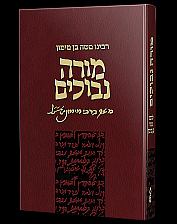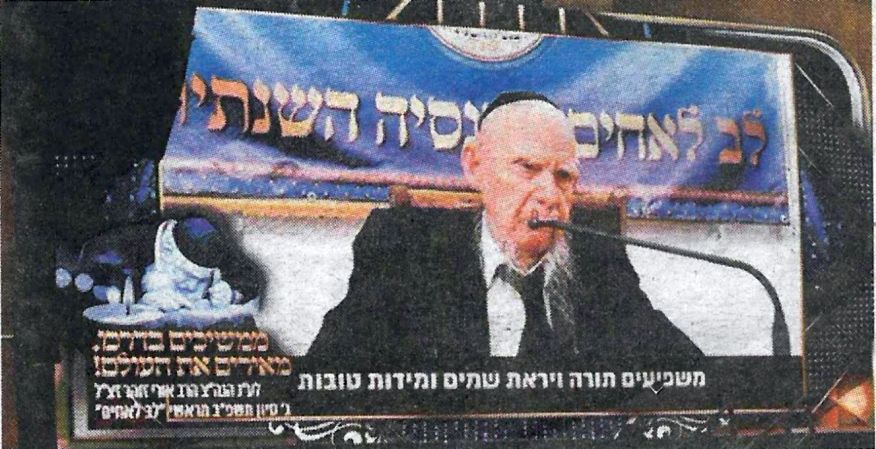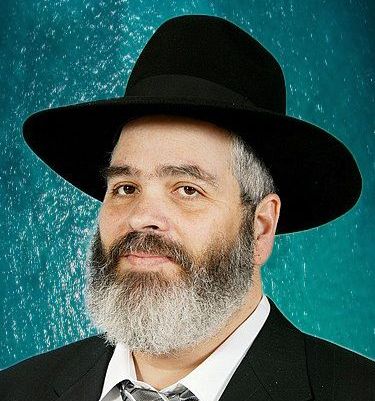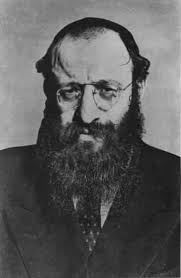  |
|
| |||||
This Google Custom Search looks only in this website. Agudath Israel Urges Pulitzer Board to Not Honor NY Times Anti-Hasidic Articles; Also Shabbos in the Workplace
KnowUs, a new, effort to counter misleading, negative portrayals of Orthodox and Hasidic Jews, penned an open letter to the Board of the Pulitzer Prize urging it to refrain from granting its award to The New York Times for its deeply offensive and flawed series of articles attacking these thriving communities. Prize winners are scheduled to be announced in May.
Since September 2022, KnowUs has chronicled a Times crusade of one-sided, inaccurate articles mischaracterizing Orthodox Jews. The activist reporting is widely rumored to have set its sights on the journalistic award.
KnowUs mailed the letter to each of the 18 Pulitzer Board members.
If in the past, denial of the Holocaust was carried on by the historiography which distorted real history for the sake of glorifying and memorializing the rebels for their own propaganda agendas.
The chareidi historian, Rabbi Yehoshua Eibshitz zt"l proved with stark facts that HaRav Alexander Zusha Friedman zt"l HY"D, author of "Maayona shel Torah," a famous publicist and representative of chareidi Judaism in the leadership of the Warsaw ghetto, called upon the heads of those who were planning the uprising residents in the bunker on Dzelena 34 St., not to carry out the revolt. He argued that without the revolt, it was plausible that a portion of the Jews would survive. The other scenario would be a total annihilation of the entire ghetto.
The saga of the judicial reform is behind us. Now comes the truth, the real thing, the very purpose behind the wild and violent struggle against the elected government.
The goal of all Jewish antisemites, past and present, has always been a secret they sought to hide under a veil of motives and reasons of all kinds. In the past, they claimed that the Jews were to blame for everything; today it is the chareidim and bnei Torah, even though they had no part or parcel with the controversies between Right and Left. But it is their goal and mission. Everything else is merely a cover-up.
The broad public which went forth to demonstrate, probably believed, and still do, that they were fighting for democracy. But there are concealed leagues behind this battle, powerful ones with huge monetary backing, who calculated their goals which were totally different, and utilized the government's program and actions regarding the Reform to further their own purposes.
These factions seek to destroy the Jewish State, or better said, what is left of it, and the reality that the government is actually dependent upon the chareidi and traditional public upsets them no end.
<Part I
This long series of articles was originally published in print in 1994, exactly 29 years ago. It describes the approach and feeling of certain representatives of the Zionist movement during the Holocaust. Sammy Kaufman argues that their behavior was influenced by their political desires to achieve a Jewish state, and their assessment that Jewish sacrifices in the war will make achievement of that goal more likely.
On the twenty-eighth of Nisan, the State of Israel observed "Holocaust and Heroism Day." Fifty years later however, even the secular establishment have had to face the serious cracks in the facade of Zionist "heroism" of that period that have come to light.
The issue of the conduct of the Zionist leadership during the destruction of European Jewry has become the subject of intense public debate over the past few years as walls of silence have come tumbling down. Historian Sammy Kaufman has researched the subject thoroughly, examining documents, interviewing researchers and meeting those who took part in the fateful events. His journey into the bloodstained past also led him to a personal journey back to Yiddishkeit. He presents his findings in the following series of articles which were originally published by the Hebrew Yated.
General Introduction
Rav Michoel Dov Ber Weissmandel was assigned by Heaven to one of the most extraordinary roles that were filled in the Second World War. He was to become the instigator of one of the most daring rescue projects to be attempted during that period of the fearful destruction which overwhelmed the Jews of Europe.
Rain and Kinneret Watch by Dei'ah Vedibur
Staff
Our weekly report of the rain and the level of the Kineret -
Winter, 5783.
* * *
Outstanding Articles From Our Archives
Feature
by C. Ofek
As the preparations for Pesach begin, we recall that the Haggodoh says that we should see ourselves as having come out of Mitzrayim. Boruch Hashem in these times of global freedom, most Jews of the world find it difficult since the experience is so remote from our modern lives. However with the rise of Shiite Moslems to power in Iran in 1979, the relatively large Jewish community of Iran found itself in a situation that had many contact points. The authorities oppressed them, while at the same time tried to keep them from leaving.
Here we present the stories of two members of a family that escaped from Iran around 18 years ago. In our days, they lived through years of hardship and struggle, until they reached Eretz Hakodesh where they could live a full Jewish life.
*
Zahava Michaeli will never forget the night she landed in Eretz Hakodesh 18 years ago, leaving Iran behind forever. On June 24, 1987 (5747) in the middle of the night she arrived with her husband, six-year-old Aviva (then called Bahara) and two-year-old Moshe (then called Bahador). They came as refugees, haggard, gaunt, weak and sickly, carrying no luggage or possessions, not even a handbag.
Mrs. Michaeli's older brother, R' Shmuel Yerushalmi, also made a harrowing escape. The two siblings, like most of the Jews who fled from Iran, placed themselves in grave danger. They might have been accosted by highwaymen who would rob them of the money tucked away between the folds of their garments and then kill them. Or the border police could have conspired against their caravan and threatened them with shots and killings. Worst of all was the prospect of getting caught and sent to an Iranian prison.
Despite the hardships, the two siblings' and their respective families' escape was a dream come true-the dream of leaving fundamentalist Iran and coming to Israel.
IN-DEPTH FEATURES
R' Shlomo Lorincz zt"l
Chapter Seven
"Chessed and emess met; justice and peace kissed" (Tehillim 85:11).
It is believed in this world that the four concepts of kindness and truth, justice and peace, are somehow contradictory, or self-exclusive. People think that a person who wishes to perform acts of kindness must at times forgo the value of truth. And truth comes, at times, at the expense of kindness. Chazal say that when Hashem took counsel with His Heavenly hosts before the creation of man, the attribute of truth declared, "Do not create him, for he is wholly false." Chessed, on the other hand, said, "Let him be created, for he is full of kindness."
At the perfect man, however, "Kindness and truth meet; justice and peace kiss." There is no contradiction between them. On the contrary, there is a meeting and a kissing between them. Truth does not preclude kindness nor does justice stand in opposition to peace. One complements the other.
These words were borne out by the Chazon Ish ztvk'l: He was immersed in acts of kindness throughout his days and never wavered from a steadfast cleaving to the truth.
He tackled a practical deed only after having examined it from all sides. We see this in his Torah works: that he clarified every topic from all possible angles and all the ramifications and implications that could result from it, until everything was perfectly resolved and settled without any contradictions or questions. And this was his conduct in the world of action, as well. Everything was done to perfection. Nothing was left open-ended.
|
|||||




.jpg)



